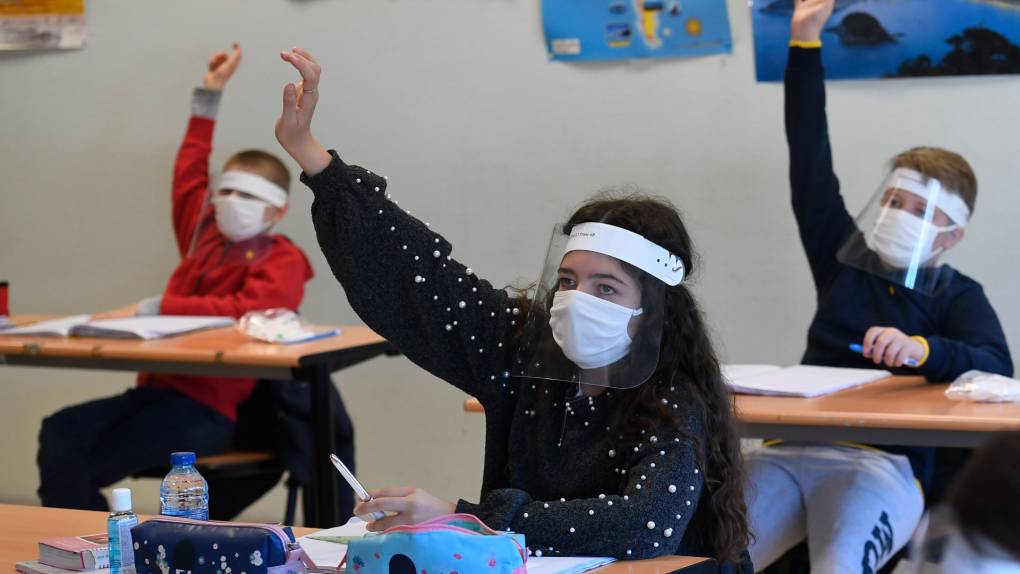Jack Gerson
Posted July 20, 2020

A push is underway to reopen schools in the fall. On Wednesday morning, Donald Trump demanded that the Centers for Disease Control (CDC) water down its guidelines for safe reopening of schools. “I disagree with @CDCgov on their very tough and expensive guidelines for opening schools” Trump tweeted. Trump would prefer the guidelines to be lax and cheap.
Mike Pence joined in, declaring “We’re working to reopen America and America’s schools. It’s time for us to get our kids back to school”, adding ominously that next week CDC will issue new school reopening guidelines. if they don’t.
Trump threatens to deport foreign students whose colleges don’t reopen and to withhold federal funds from school districts that don’t reopen. Having pushed states to reopen too soon — causing a renewed surge in infections — Trump wants to do the same with schools.
His policies would put children, teachers, families, and communities at great risk.
However, others with better credentials and better intentions than Trump are also calling for schools to reopen. The American Academy of Pediatrics in particular is urging reopening schools even if distancing has to be reduced to 3 feet. They argue that children need physical contact with others, and are being hurt by extended isolation. We need to take this seriously. Keeping schools closed does affect kids, especially the youngest and the most disadvantaged. Schools can’t be closed indefinitely.
But schools can’t be reopened safely while the pandemic is out of control: doing so would likely result in so many infections among teachers and other school workers that schools would soon have to be shut down anyway. Plus, even if most students don’t come down with severe COVID-19 symptoms, many would be asymptomatic carriers who spread the disease to their families — a recently published study in the Proceedings of the National Academy of Sciences (“The implications of silent transmission for the control of COVID-19 outbreaks”) estimates that transmission from asymptomatic individuals is responsible for half of the cases of COVID-19. Reopening schools now, as the first surge of COVID-19 continues to rise and may be amplified in late fall by a second surge and by a new flu outbreak, is a risk that must be avoided.
Step one in making it safe to reopen schools is to get the pandemic under control. This means returning to measures that worked well this spring: maintain six foot distance; wash hands frequently; wear masks when six foot distance can’t be maintained; limit time spent in public indoor places; etc. The goal should be to reduce the number of cases until there are few enough that adequate testing, contact tracing and quarantine become feasible.
But even if we somehow got the outbreak under control tomorrow, it would not yet be safe to reopen schools in the fall. There’s simply no way that the vast majority of schools and school districts can meet the current — and essential — CDC guidelines for adequate protective measures.
Consider perhaps the most important: maintaining six foot distancing. This will require small class size — on average, probably cutting class size in half, which in turn requires more teachers, more instructional aides, and more facilities. New teachers and instructional aides will need to be trained; new facilities will need to be acquired and converted into classrooms with hand washing stations. This simply can’t happen over the next couple of months. It will take time — a minimum of six months — and it will require adequate funding.
To open schools safely, the start of the school year should be deferred by more than six months: change the school year to run from spring through fall (say, April 1 through November 15). That would avoid the late fall and winter virus season; it would allow for outdoor classes; it would provide time for better therapeutics and, maybe, a vaccine; and it would provide time to recruit train more instructional aides and teacher interns, to acquire more facilities, and to assemble an adequate amount of PPE. This ought to be the priority of education activists, and it meshes with the emerging movement: fund schools by defunding the repressive state apparatus — demilitarizing the cops, dismantling the school to prison pipeline and ending mass incarceration, closing foreign bases, and bailing out schools not airlines and other corporations.
Deferring reopening until spring will also give us time to learn a lot more about how the disease affects young people 18 and under. We know that the mortality rate is very low among those less than 18 (in California, the mortality rate from the virus in the 0-17 age group is 0%.) What’s not readily available is a morbidity breakdown for the same age group: how many are hospitalized, and of those how many require ICU care; and how many suffer chronic long-term effects after recovery (an Italian study found that 30% of those who recovered have chronic respiratory problems).
Six months from now there should be a greater understanding of how to treat the disease and how to coexist with it (we certainly know much more about it already than was known four months ago). Hopefully, by then, we will have successfully campaigned to get the funding that we need, have recruited and trained more teachers, acquired more facilities and adequate PPE. Then we may be ready to safely reopen schools.
If society means what it says about the importance of young people’s lives as well as their education, then there really is no question about what to do, is there?
Do the right thing!
Defund the repressive state apparatus! Demilitarize the police!
Shut down the school to prison pipeline / End mass incarceration!
Close foreign bases!
Money for schools, jobs, and housing, not cops, prisons, and wars!
Jack Gerson is a retired Oakland CA school teacher and union activist. This article appeared on the Facts for Working People website on July 9, 2020 here.
